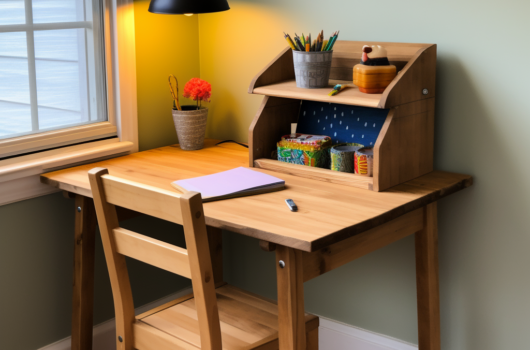- Understanding the Importance of a Daily Routine in Kindergarten Homeschooling
- Setting Clear Goals and Objectives for Your Kindergartener’s Homeschooling Journey
- Creating a Structured Schedule: Balancing Learning, Playtime, and Rest for Optimal Development
- Designing Engaging Lesson Plans: Incorporating Interactive Activities and Hands-on Learning
- Establishing Effective Transitions: Smoothly Moving from One Activity to Another
- Nurturing Social Interaction: Fostering Peer Engagement and Collaboration in a Homeschool Environment
Understanding the Importance of a Daily Routine in Kindergarten Homeschooling
Kindergarten is a crucial stage in a child’s development, laying the foundation for their future academic success. When homeschooling your kindergartener, it becomes even more important to establish a daily routine that provides structure and consistency. A well-designed routine not only helps children feel secure but also enhances their learning experience.
Research has shown that routines play a significant role in promoting positive behavior and emotional well-being among young children. By establishing clear expectations and consistent patterns, you can create an environment where your kindergartener feels safe and confident to explore new concepts.
Setting Clear Goals and Objectives for Your Kindergartener’s Homeschooling Journey
Before designing your daily routine, it is essential to set clear goals and objectives for your kindergartener’s homeschooling journey. These goals will guide you in selecting appropriate activities, resources, and materials to support their learning.
Consider what skills you want your child to develop during this year of kindergarten. Are you focusing on literacy or numeracy? Do you want them to enhance their social-emotional skills or foster creativity? Setting specific goals will help ensure that each day’s activities align with these objectives.
For example, if one of your goals is developing early reading skills, incorporate daily read-aloud sessions into the routine. Choose age-appropriate books that engage their imagination while introducing new vocabulary words. This activity not only supports language development but also fosters a love for reading from an early age.
Creating a Structured Schedule: Balancing Learning, Playtime, and Rest for Optimal Development
A structured schedule is vital when designing an effective daily routine for kindergarten homeschooling. It allows children to anticipate what comes next while providing opportunities for both focused learning time as well as unstructured play and rest.
According to the American Academy of Pediatrics, children aged 3-5 years old should engage in at least one hour of structured learning activities each day. This can include subjects like math, science, language arts, and social studies. However, it is crucial to balance this with ample time for unstructured play and physical activity.
Incorporating regular breaks throughout the day allows your kindergartener to recharge their energy levels and process new information. Consider scheduling short periods of free play or outdoor exploration between academic sessions. These breaks not only promote physical development but also enhance creativity and problem-solving skills.
Designing Engaging Lesson Plans: Incorporating Interactive Activities and Hands-on Learning
To keep your kindergartener engaged during homeschooling sessions, it is essential to design lesson plans that incorporate interactive activities and hands-on learning experiences. Young children learn best through active participation rather than passive observation.
For example, when teaching math concepts such as counting or basic addition/subtraction, use manipulatives like blocks or counters. This tactile approach helps them visualize abstract ideas while developing fine motor skills simultaneously.
Additionally, consider incorporating technology into your lessons by utilizing educational apps or online resources specifically designed for kindergarten-aged children. These interactive tools provide a multisensory experience that enhances engagement while reinforcing key concepts.
Establishing Effective Transitions: Smoothly Moving from One Activity to Another
Transitions are an integral part of any daily routine as they help smoothly move from one activity to another without disruptions or resistance from your kindergartener. Establishing effective transitions requires clear communication and visual cues that signal upcoming changes in tasks or environments.
One strategy is using a visual schedule where you outline the sequence of activities for the day using pictures or symbols alongside written words. Display this schedule prominently so that your child can refer to it independently whenever needed. Visual schedules provide predictability and reduce anxiety associated with transitioning between activities.
Another effective transition technique is using transitional songs or rhymes. Singing a short song or reciting a rhyme before moving on to the next activity helps create a sense of rhythm and anticipation, making transitions more enjoyable for your kindergartener.
While homeschooling provides individualized attention, it is crucial to nurture social interaction and foster peer engagement within the homeschool environment. Socialization plays a vital role in developing communication skills, empathy, and cooperation among young children.
Consider organizing regular playdates with other homeschooled kindergarteners or participating in local homeschool co-op groups where children can interact with peers their age. These opportunities allow them to practice sharing, taking turns, and resolving conflicts while building lasting friendships.
Additionally, incorporate collaborative activities into your daily routine that encourage teamwork and problem-solving. For example, assign group projects where siblings or family members work together to complete an art project or build something using blocks. This not only promotes social interaction but also enhances critical thinking skills through shared decision-making.
In conclusion, designing an effective daily routine for kindergarten homeschooling requires understanding the importance of routines in promoting positive behavior and emotional well-being among young children. Setting clear goals and objectives guides the selection of appropriate activities aligned with desired outcomes. A structured schedule balances learning time with playtime and rest for optimal development. Engaging lesson plans incorporating interactive activities enhance active participation during lessons. Effective transitions ensure smooth movement between tasks without disruptions or resistance from your child. Finally, nurturing social interaction fosters peer engagement by providing opportunities for collaboration within the homeschool environment.
